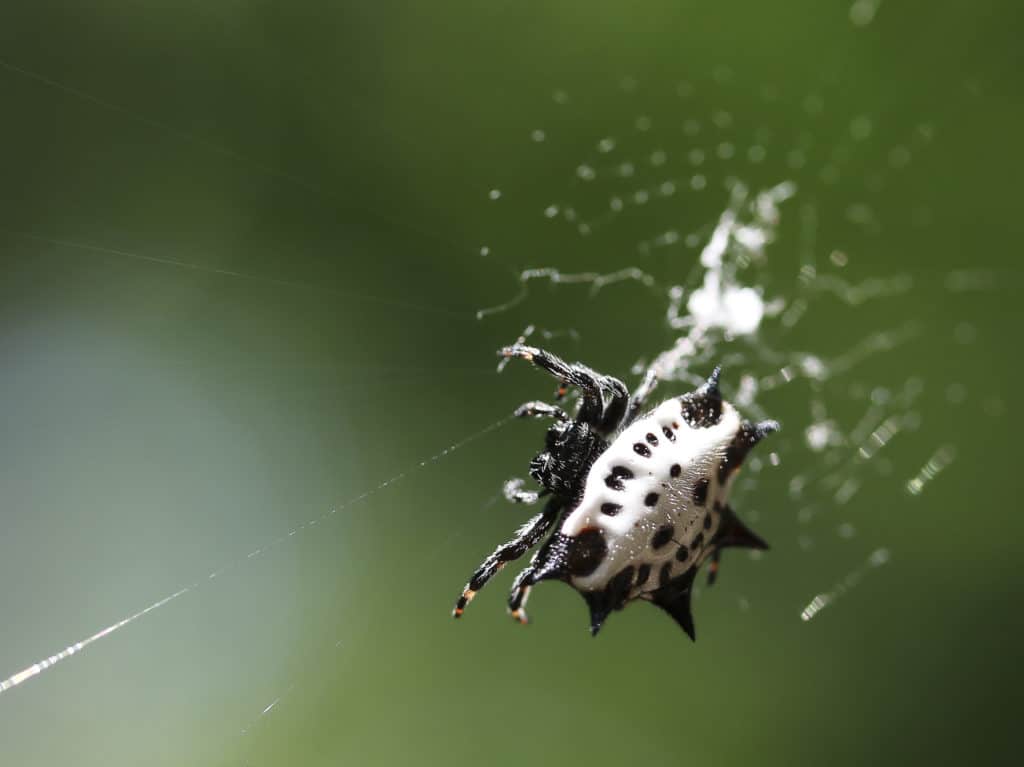Creature Feature

Spiny-backed Orb Spider
By Wayne Bierbaum
I like to walk through the early hours of the morning. I am frequently the first person going down a trail. I get to see animals that hang around from the night before and the diurnal ones that hide in the middle of the day. There is a downside to being the first down a trail though: spiders. Overnight, spiders spin webs that frequently seem to be placed at my eye level.
Today, I took a walk along the Patuxent River and saw a bunch of turtles, a few snakes, a muskrat, and lots of birds, including an eagle. As I was walking up a hill to get back to my car, I had to swim through lots of spider webs. The last web that I started to break through contained a black and white spider rushing to put finishing touches on its intricate bug trap. I was able to slide sideways and avoid the web. The spider was an odd one with a rock-like shell with spikes: a male spiny-backed orb spider.
Orb spiders make intricate spiral webs with the spider frequently found in the center. The spiny-backed ones are smaller than most orb spiders. They are like other spiders with sexual dimorphism (their differences go beyond reproductive organs). The females have more colors and frequently have red tips on their spines. Males find a mate by tracking down a female’s web. These males, unlike black widows, survive the mating. In mid- to late summer, a female makes an egg case at one of the anchor points of their web. The mother spider will defend the egg case but as soon as they are hatched, the young spread out in all directions with no further parental support.
Spiny-backed orb spiders are found all over the world and come in very bizarre shapes and dramatic colors. None are thought to cause any poisonings.
Spiders are important in the balance of beneficial animals versus pests. Use insecticides carefully or just avoid them altogether.
